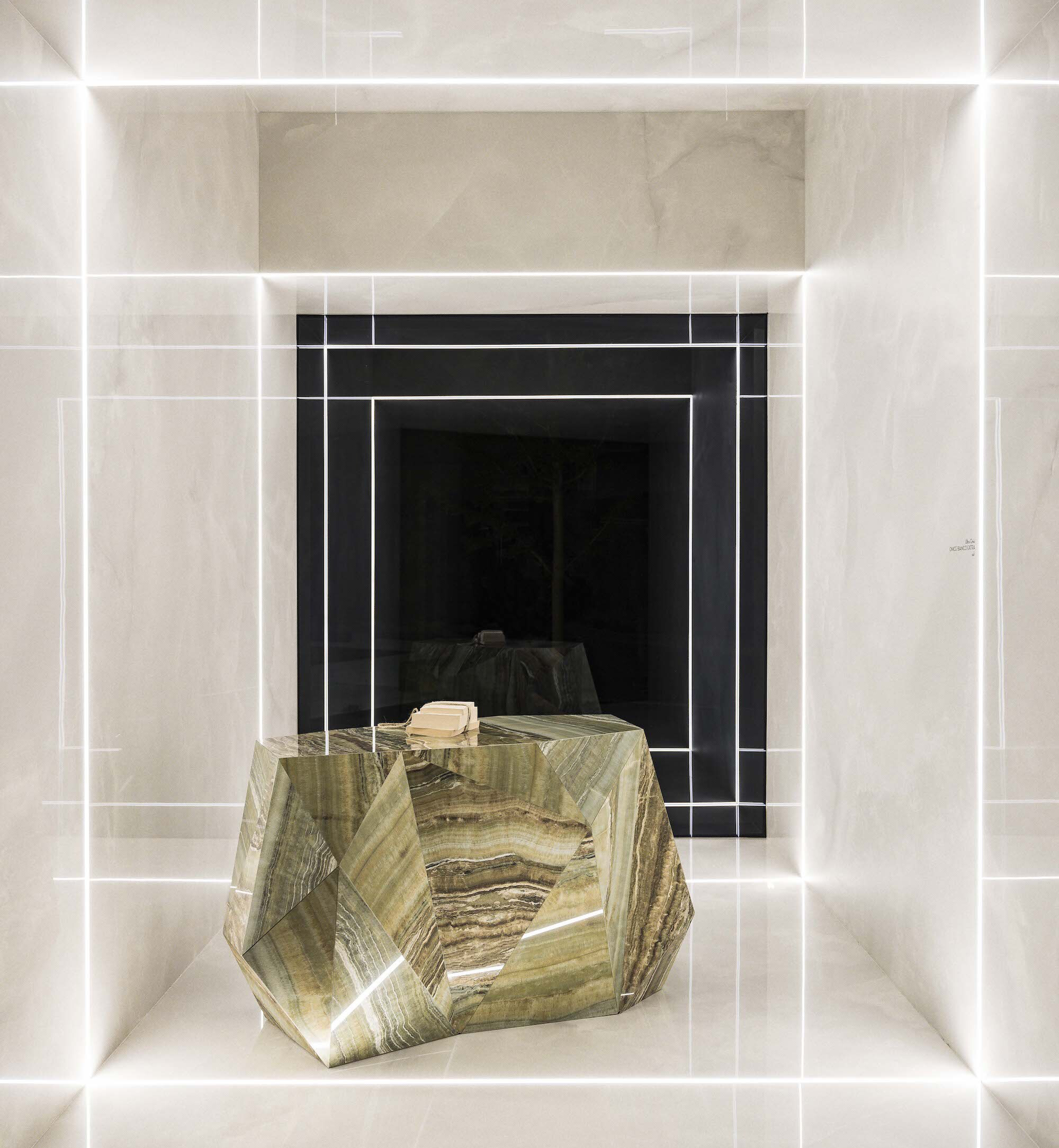
Ariostea’s porcelain surfacing looks every bit like iridescent green onyx.
In the world of building finishes, there are countless ways for one material to imitate another. Porcelain can look like concrete, extruded aluminum can pass for wood, and dusty plaster can simulate black marble. As the saying goes, “Don’t trust everything you see – even salt looks like sugar.”
But mimicry is not a 21st-century invention. The history of construction is littered with simulacra, primarily because what clients want in architecture and interior design isn’t always affordable, and that has been true for thousands of years. One of the most popular faux finishes, originally invented in the 17th century, is scagliola, also known as stucco lustro. Stucco plasterers, especially in Venice, used a special spatula to imitate marble with convincing veins created by running strands of raw silk through the wet plaster. The technique is now used everywhere, especially in churches and government buildings where aggrandizement is the goal.
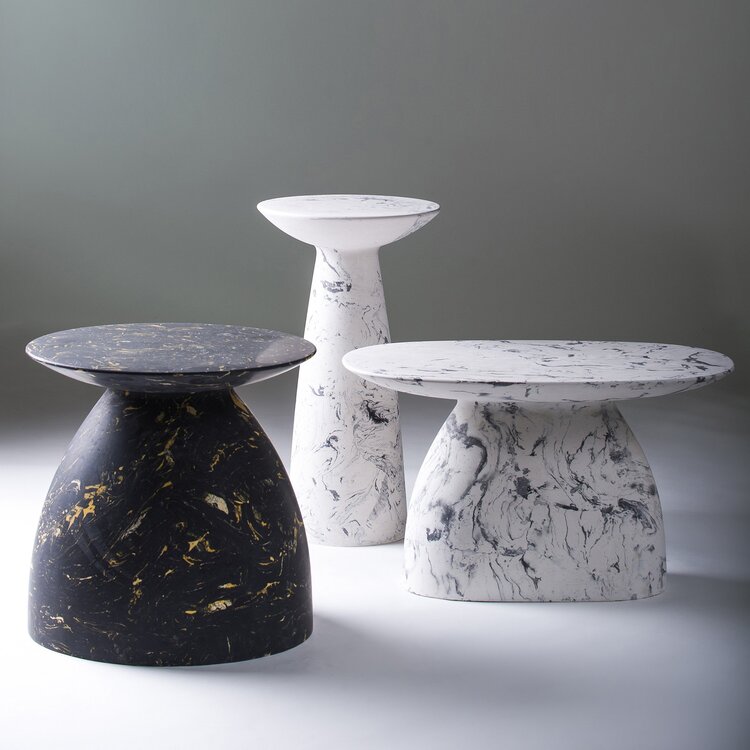
Moss&Lam of Toronto uses the ancient art of scagliola to create the look of marble furniture. Photo: Moss&Lam
Price still plays a role when it comes to choosing finishes. But whereas in the past, when unearthing precious raw materials and transporting them were significantly more challenging, today, the most integral selling point is sustainability. For instance, extruded aluminum with a wood finish has grown in popularity as an alternative to traditional wooden planks, offering a more contemporary look with a much longer lifespan. Wood is vulnerable to warping and rotting. It also ages quickly, in Canada especially. By comparison, when aluminum is powder-coated and imprinted with a grain effect using UV-resistant inks, it will look brand new for decades. It also requires almost no maintenance beyond the occasional hosing down with water and soap. That’s hard to beat.
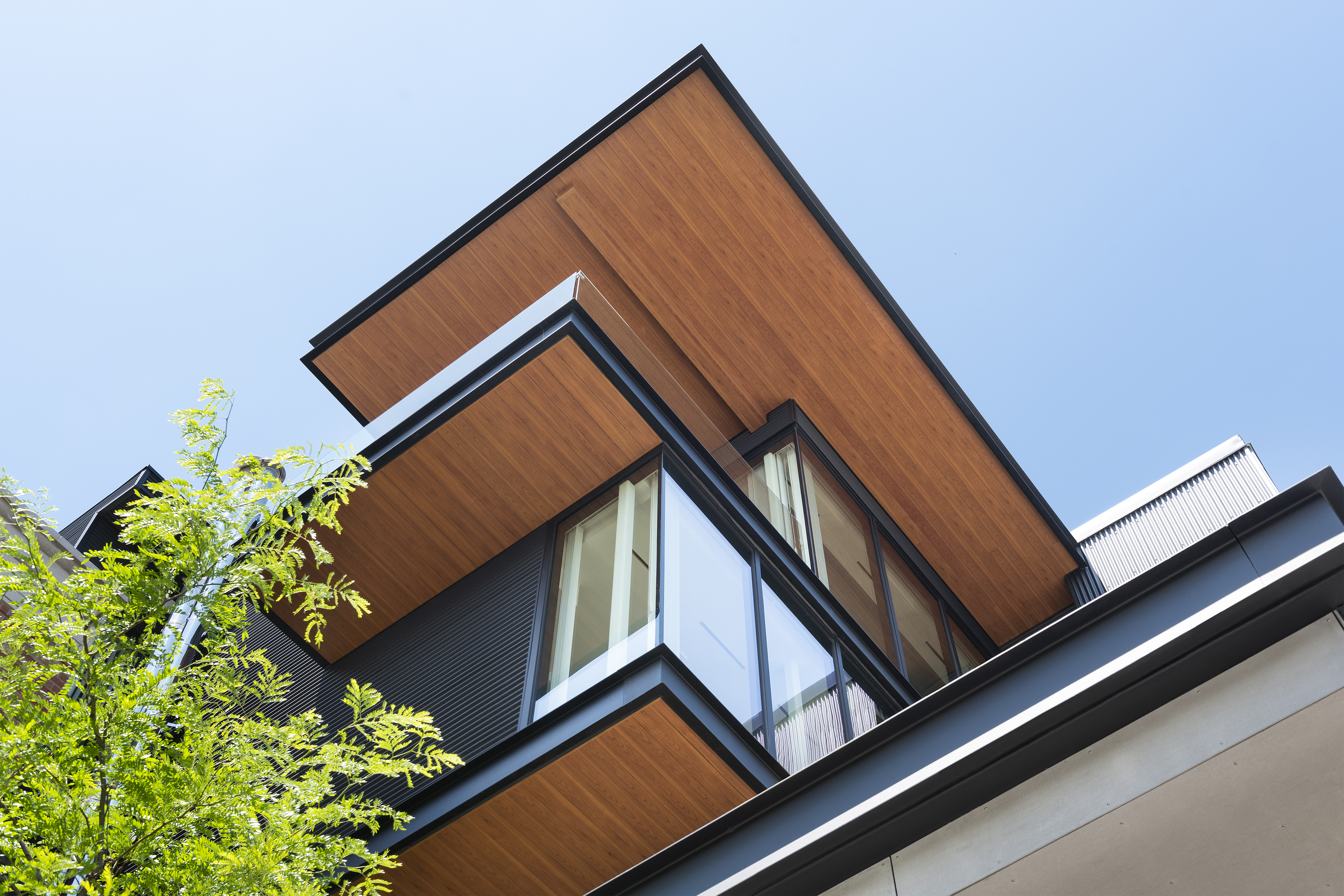
Extruded aluminum soffits and cladding by Luxyclad simulate the look of wood but provide the durability of metal. Ryan Fung Photography
While there is no denying the genuine look and feel of authentic stone, wood or metal, their substitutions have dramatically improved in recent years. In many cases, technological advancements have made fakes more beneficial than what nature provides. Consider the bathroom. To achieve the look of warm wood flooring, the best option is porcelain, which not only has the desired grain finish, it’s far more durable, easy to clean and can provide a sure grip, reducing the chance of slippage while taking a shower. In fact, the wood effect is so popular every major tile manufacturer has at least one or two lines of plank-format stoneware . (The second most marketable tile is a dead ringer for raw cement.)
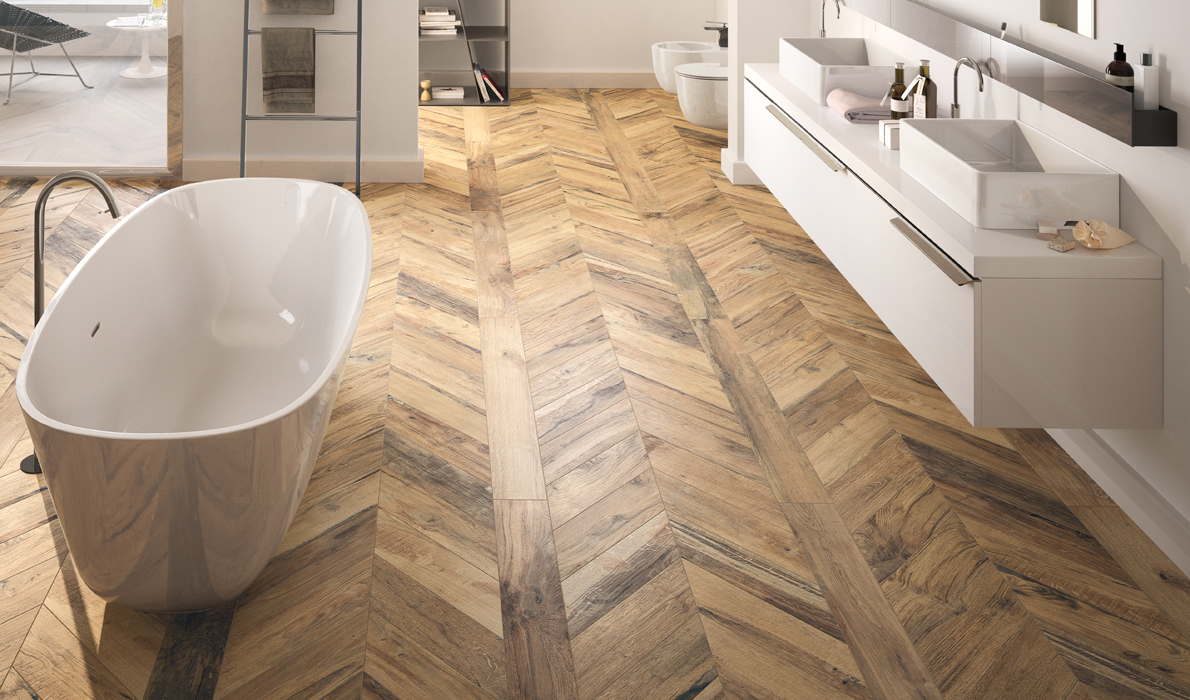
Bathroom floors often feature wood-grain porcelain planks in lieu real wood. Photo: Emilceramica
Laminates have also climbed the quality ladder. Nano-technology has giving them the edge over porous stone or heavy metal by offering light, anti-bacterial lookalikes that can be applied to virtually anything, including furniture and fittings. At Cersaie last year, Italy’s largest tile exhibition held annually in Bologna, another faux trend was gaining attention: 3D-printed tiles. Casalgrande Padana’s porcelain stoneware walls layered with life-size images of climbing ivy was a showstopper.
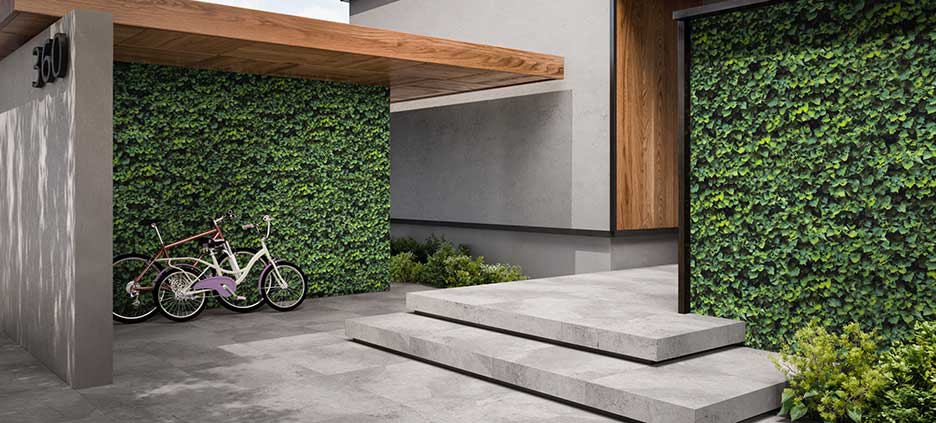
Stoneware by Casalgrande Padana mimics the look of climbing ivy
In its purest form, raw materials will always be appreciated for their authenticity and as statements of timeless quality. It’s just that now the alternatives can out-perform. When used in combination, the real and fake can provide designers with the best of both worlds – a harmonious mixture of art and nature.
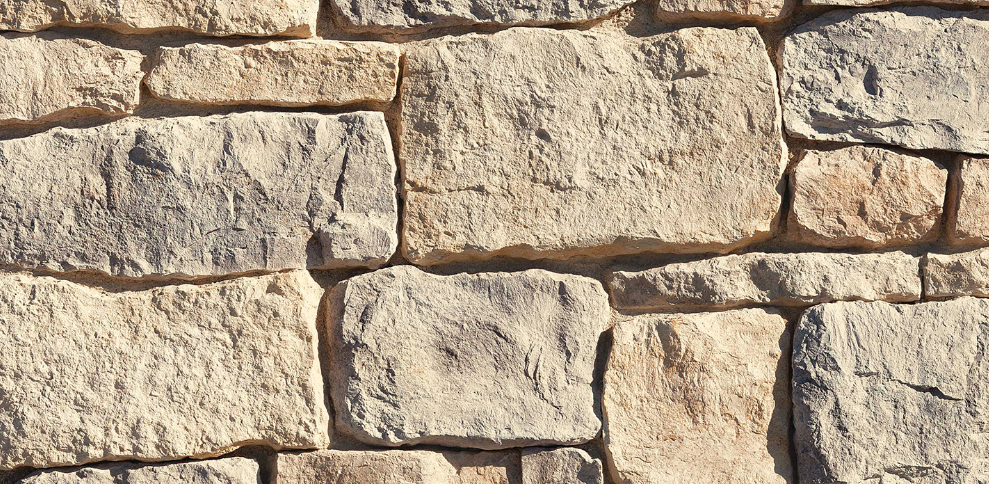
Stone veneers are a more flexible alternative to actual boulders, and can feature convincing details like embedded fossilized artifacts. Photo Eldorado Stone
Based on an article by Barbara-Jahn Rösel originally published for the German ARCHITECT@WORK newsletter